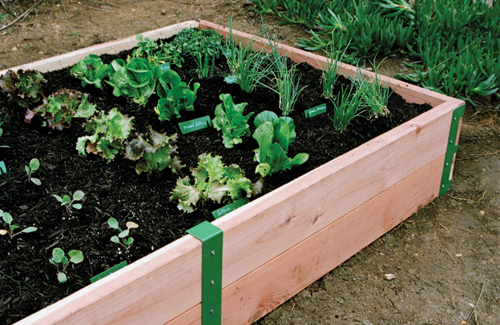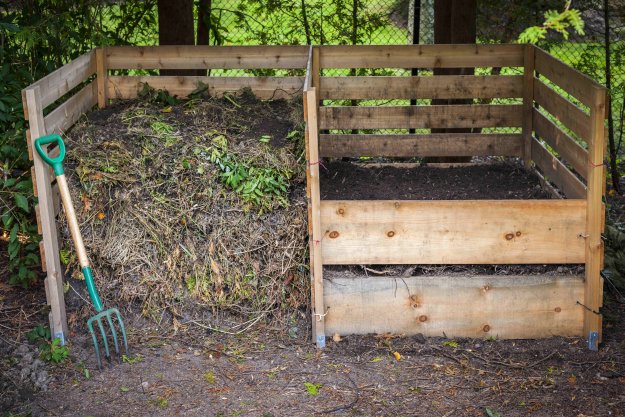Discover Necessary Tips for Effective Gardening Techniques and Practices
By prioritizing essential components such as soil health, reliable watering strategies, and ideal plant choice, gardeners can develop a successful community that sustains lively growth. Several lovers overlook crucial information that can make or break their horticulture success-- checking out these overlooked facets may disclose the key to growing a flourishing yard.
Understanding Dirt Health
Dirt health is a basic aspect of effective gardening, as it directly affects plant growth, vitamins and mineral availability, and environment balance. Healthy and balanced dirt is characterized by an abundant biodiversity of microorganisms, raw material, and a balanced pH level, which with each other create a setting for plant advancement.
To understand soil wellness, one should consider its physical, chemical, and organic homes. The appearance and structure of soil impact its capacity to retain wetness and nutrients, while the chemical make-up determines the accessibility of crucial elements like potassium, phosphorus, and nitrogen. Regular soil testing is important to analyze these factors, allowing gardeners to make educated decisions relating to modifications and plant foods.
Moreover, promoting biological activity within the soil is important for preserving its health and wellness. Practices such as composting, crop rotation, and the use of cover crops can enhance microbial diversity, improve nutrient cycling, and reduce soil erosion. By prioritizing dirt wellness, garden enthusiasts not just maximize plant development however likewise add to a sustainable community, guaranteeing that their gardening practices are resistant and eco accountable gradually.
Efficient Watering Techniques
Making certain that plants obtain the ideal quantity of water is important for their health and development, specifically when combined with a solid foundation of dirt health and wellness (Homestead Gardening). Effective sprinkling strategies can substantially impact plant vigor, lowering water waste and promoting optimum advancement
One basic technique is deep watering, which encourages origins to grow much deeper right into the soil, boosting drought resistance. This strategy usually involves sprinkling much less often yet in larger amounts, allowing wetness to penetrate the root area thoroughly. Timing is additionally essential; morning is the ideal time to water, as it lessens evaporation and enables vegetation to dry during the day, lowering disease dangers.
In addition, employing compost can aid retain dirt dampness and regulate temperature, additional assisting efficient watering techniques. Making use of a drip irrigation system can likewise supply targeted dampness directly to the roots, making sure that water gets to where it's most required while conserving resources.
Keeping an eye on rains and dirt moisture levels can direct modifications in your watering timetable, ensuring plants obtain constant hydration without over-saturation. By embracing these reliable sprinkling strategies, garden enthusiasts can foster a thriving environment for their plants to grow.
Plant Option and Positioning
How can the right plant selection and tactical placement transform a garden into a growing community? The synergy between plant ranges and their placement is important for producing a dynamic garden. When choosing plants, consider elements such as climate, soil kind, and sunshine direct exposure. Indigenous types are typically the very best choice as they are adjusted to regional conditions and require less upkeep.
Strategic positioning includes organizing plants according to their growth behaviors and requirements. Taller plants ought to be placed at the rear of borders to protect against shielding shorter plants. In addition, organizing plants with similar water and light this website needs can improve their growth and minimize competition for sources.
Integrating a diversity of plants not just adds visual appeal yet likewise promotes biodiversity, drawing in advantageous pests and pollinators. Think about the seasonal changes in your yard; select a mix of annuals, perennials, and evergreens to make certain year-round rate of interest.
Last but not least, keep in mind to analyze the mature dimension of plants before growing to stay clear of overcrowding and make certain sufficient air blood circulation. Thoughtful plant selection and calculated positioning produce an unified environment, enabling your yard to flourish while lessening obstacles.
Insect and Illness Monitoring
Effective bug and condition management is vital for keeping a healthy and balanced yard ecosystem - Homestead Gardening. A positive strategy, combining cultural, biological, and chemical methods, can dramatically you could try these out reduce the effect of bugs and conditions on your plants

Biological controls, such as introducing useful bugs like ladybugs or predative termites, can maintain bug populaces in check without hurting the atmosphere. In addition, keeping plant wellness via correct watering, fertilizing, and trimming will bolster their resilience against illness.
When intervention is necessary, choose targeted chemical treatments, ensuring to adhere to application standards to lessen damage to non-target organisms. Constantly focus on sustainable practices, as they promote lasting yard health and wellness and ecological equilibrium. By incorporating these methods, gardeners can effectively take care of diseases and parasites, making sure flourishing plants and a productive yard.

Seasonal Maintenance Practices
In spring, emphasis on soil prep work by testing pH degrees and adding needed amendments. Consistently examine arising plants for insects and conditions.
As summertime strategies, guarantee ample irrigation while keeping an eye on for signs of anxiety or disease. Prune back disordered plants to encourage air flow and lower humidity around index foliage. This technique not just enhances plant health and wellness yet also promotes blooming and fruiting.
With the arrival of fall, it's time to prepare for wintertime. Tidy up fallen leaves and debris to stop parasite infestations, and think about growing cover plants to enrich soil health and wellness. This period is additionally ideal for dividing perennials and planting spring-flowering light bulbs.
Verdict
Effective gardening hinges on the integration of sound methods in dirt wellness, watering, plant option, parasite management, and seasonal maintenance. By prioritizing soil testing and microbial diversity, utilizing efficient watering methods, and picking ideal plants, garden enthusiasts can develop growing ecosystems. Additionally, proactive pest management and persistent seasonal upkeep contribute significantly to overall garden vigor. Welcoming these strategies cultivates a efficient and sustainable gardening environment, ensuring prospering development and strength throughout the altering seasons.
By focusing on vital elements such as dirt health and wellness, effective sprinkling techniques, and appropriate plant option, gardeners can create a growing environment that supports vivid growth. By focusing on soil health, garden enthusiasts not only enhance plant development but also contribute to a lasting community, ensuring that their horticulture practices are resilient and environmentally accountable over time.
Taller plants ought to be positioned at the back of boundaries to avoid shielding shorter plants. Tidy up dropped leaves and debris to protect against insect problems, and consider growing cover plants to enhance dirt health.Successful gardening joints on the integration of sound techniques in soil health and wellness, watering, plant option, pest administration, and seasonal upkeep.
Comments on “Transform Your Backyard with Homestead Gardening”